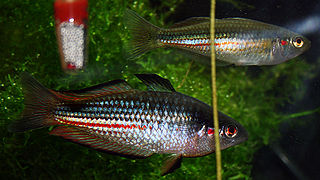Many years ago I established a school of 75 Boezeman’s Australian Rainbowfish (Melanotaenia boesemani) at the Bronx Zoo. The exhibit, which they shared with mangrove snakes, land crabs and crayfishes, made for a stunning display. And although the building also housed proboscis monkeys, marsh crocodiles, hornbills and other impressive beasts, the brilliantly-colored Rainbowfishes drew a great deal of attention from visitors.
But many keepers become disappointed when, after a time, their fishes’ fading colors do a disservice to the “rainbow” part of their name. Based on experience with related species, I’ve always provided my Rainbowfishes with highly varied diets, in which insects were heavily featured. Those under my care have usually retained their bright colors, and breeding has been consistent. A recent study that examined the natural diet of wild Rainbowfishes seems to bear this out, and has important implications for the care of other species as well.
Terrestrial Insects: an Overlooked Food Item
My lifelong observations of captive and free-living fishes have led me to conclude that land-dwelling insects play an important role in the diets of many freshwater fishes. As anyone with a pool or outdoor pond can imagine, untold numbers find their way into fresh and marine waters each day. In 2009, the research of National Oceanographic and Atmospheric Administration biologists revealed that terrestrial insects comprise up to 100% of the diets of some US fish species. You can read more about this topic in the articles linked below. Read More »
 That Fish Blog – Aquarium Advice and Information
That Fish Blog – Aquarium Advice and Information

